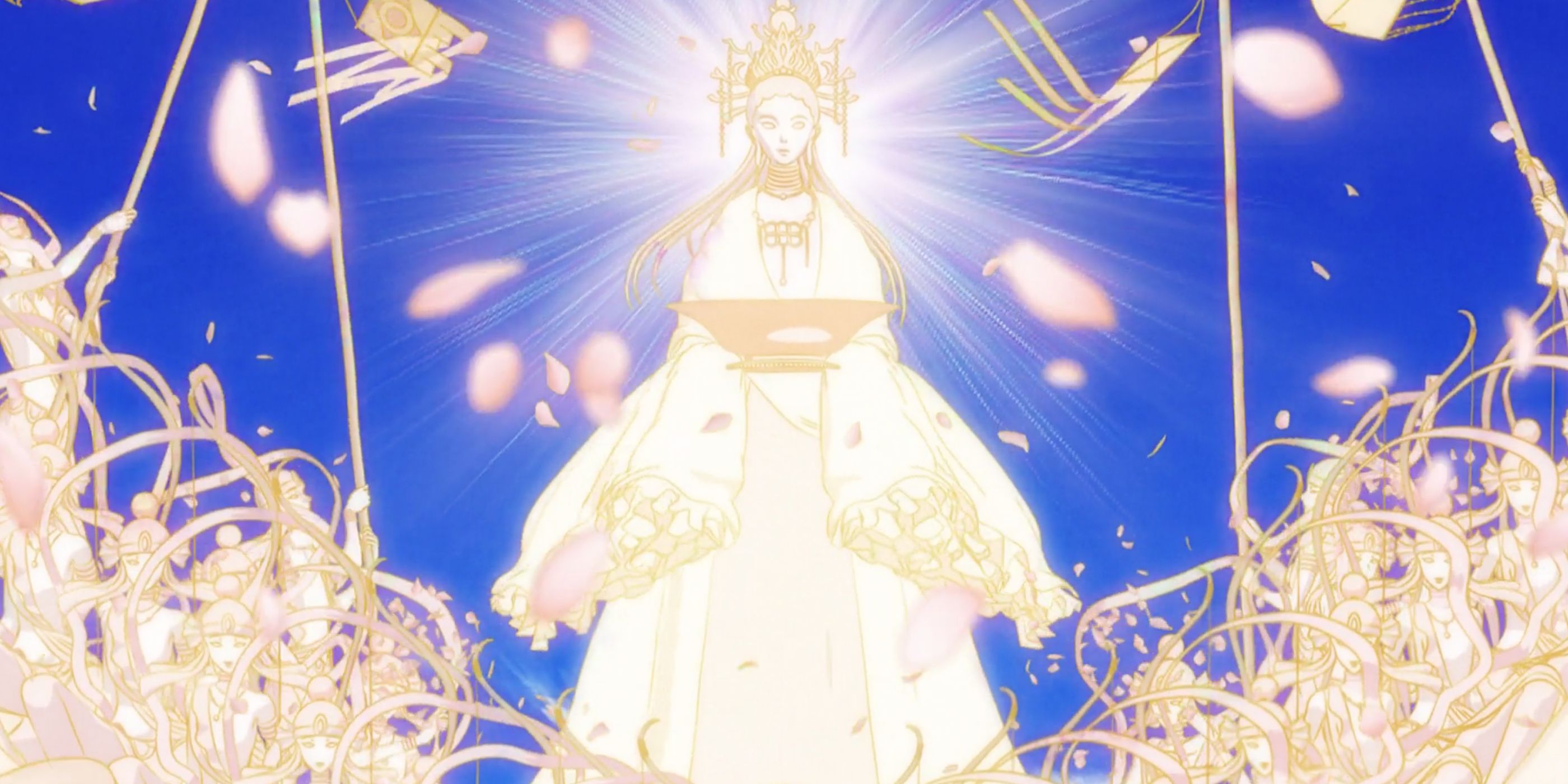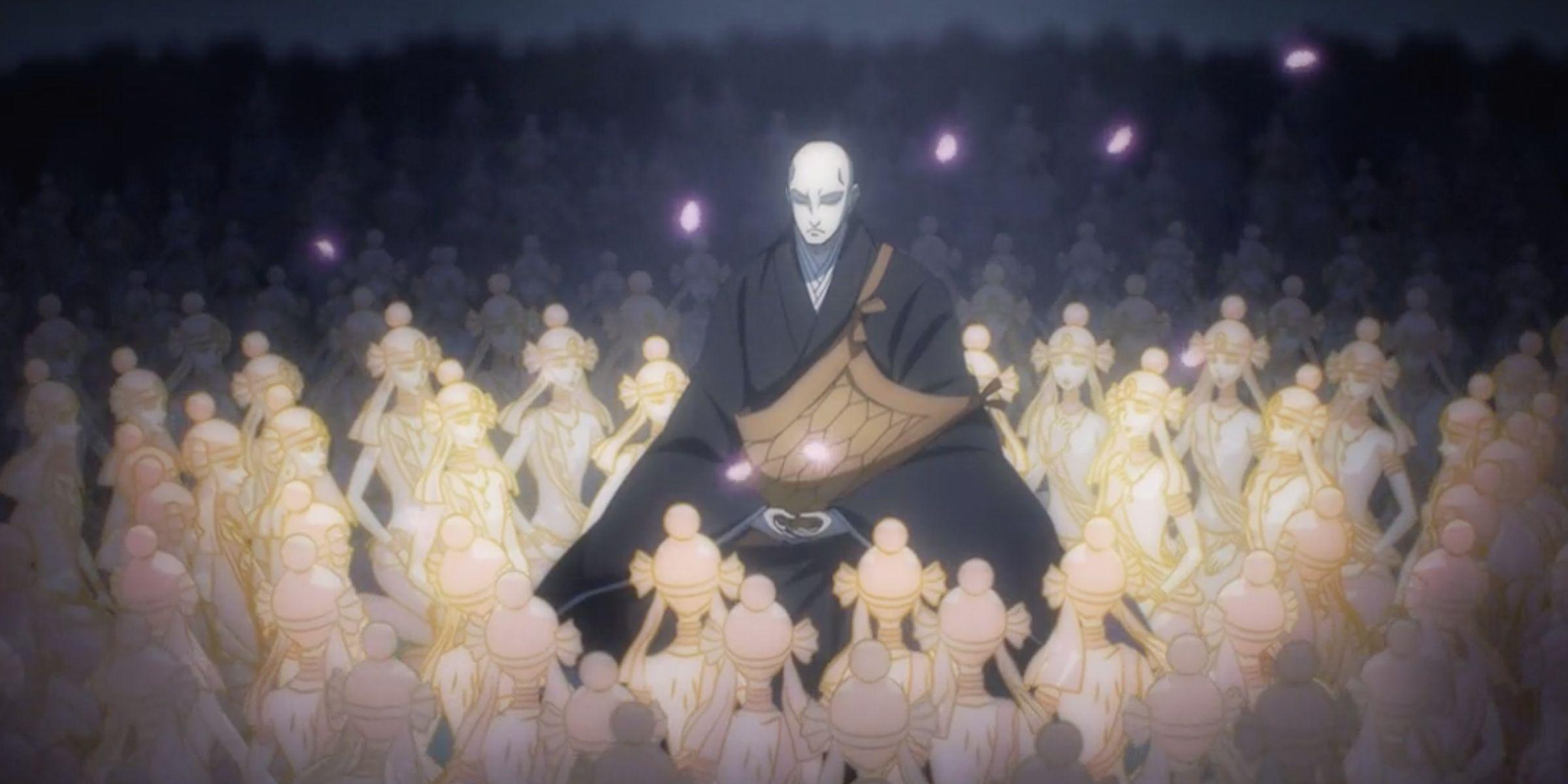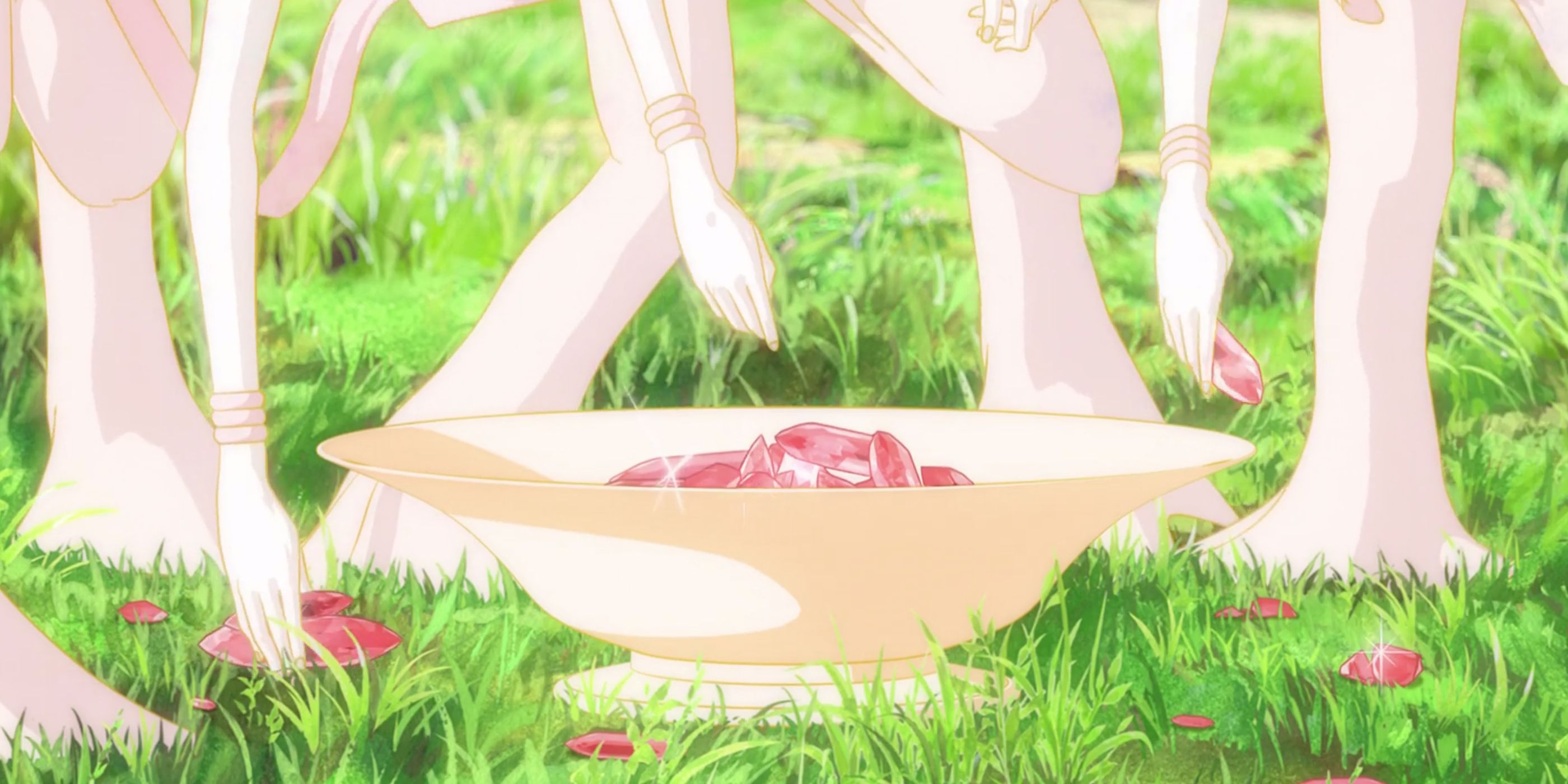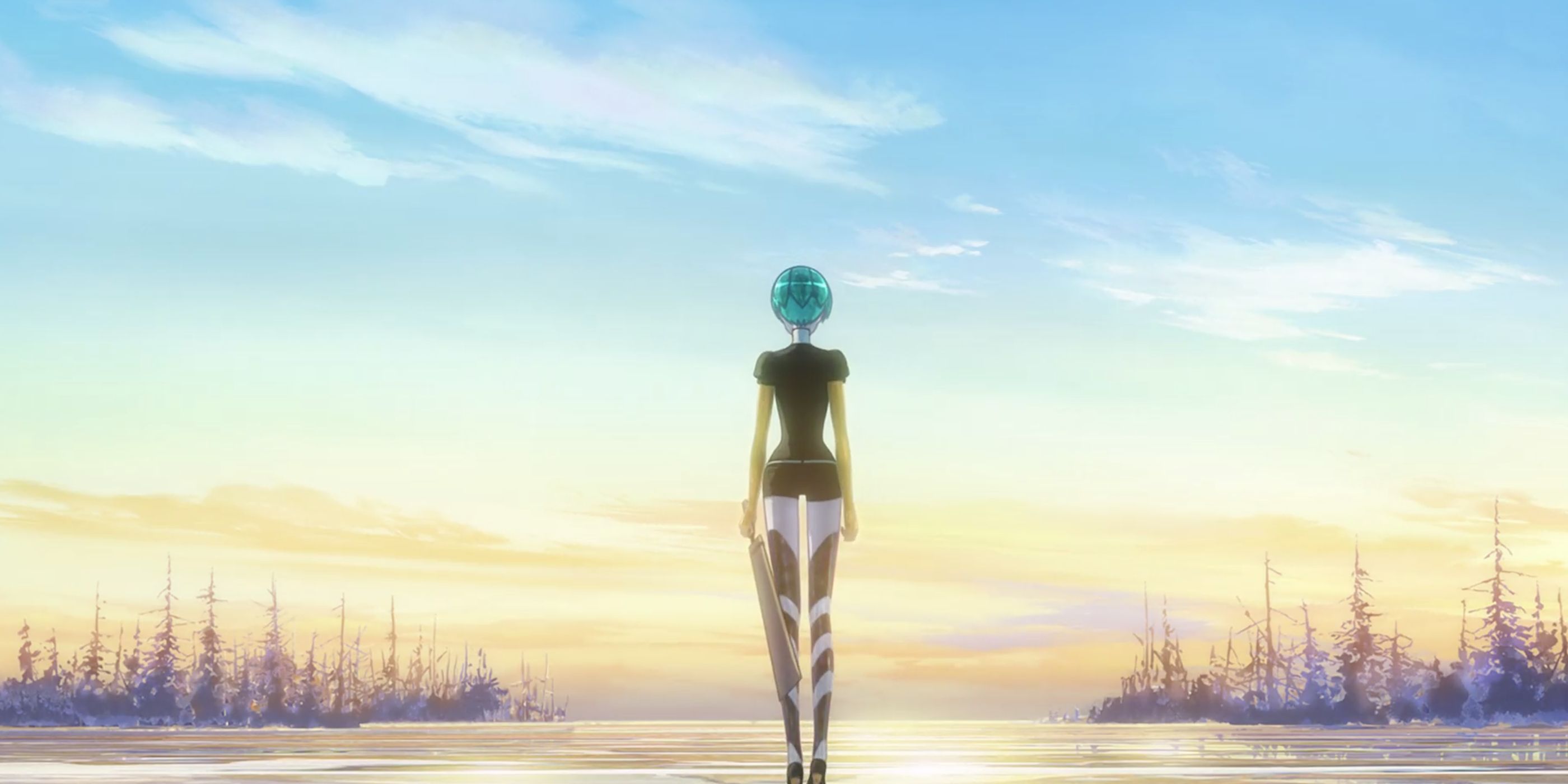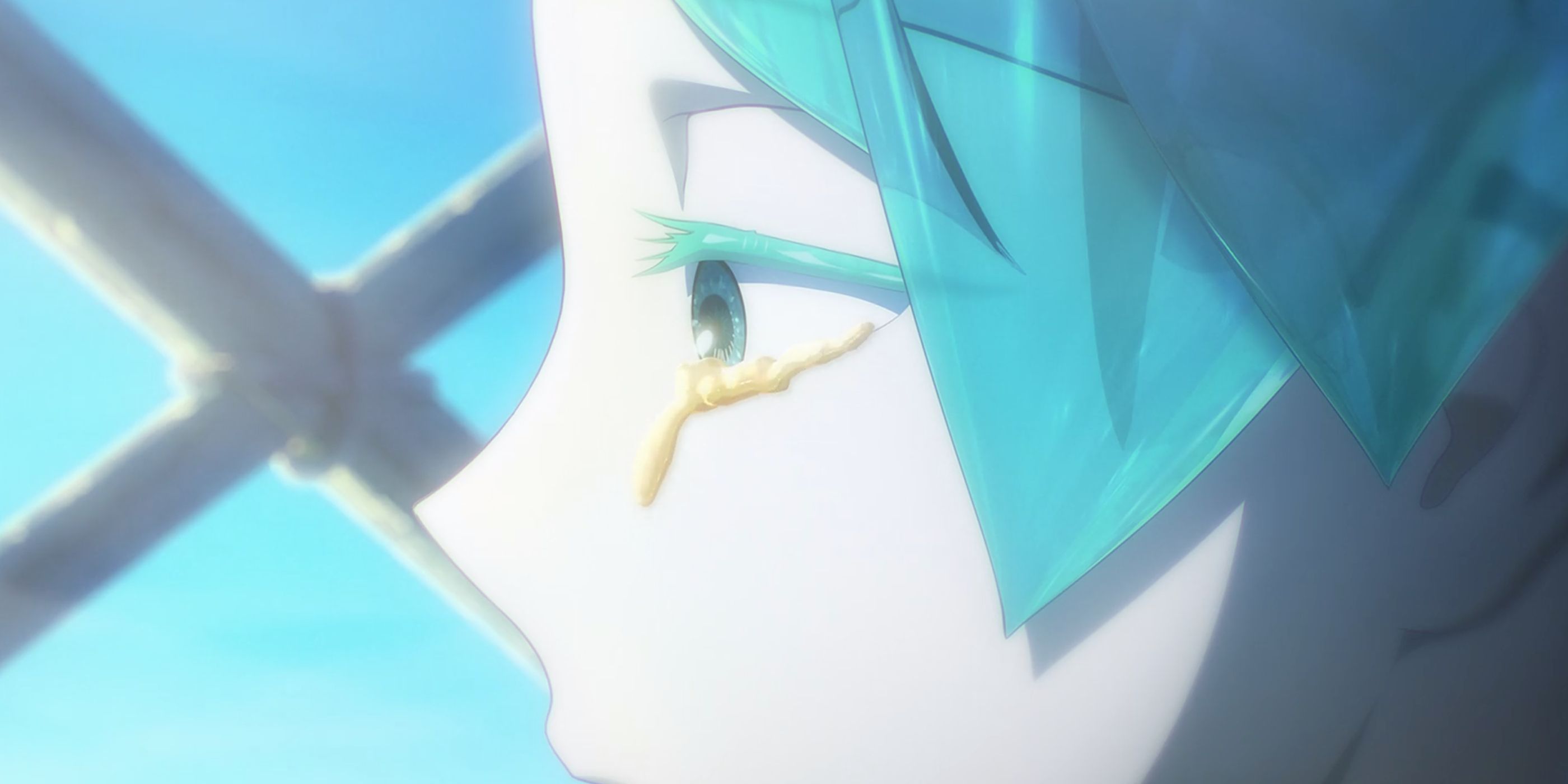Land of the Lustrous was studio Orange’s first anime before BEASTARS, featuring genderless humanoid gems and how they protect their world. At first, this premise may sound a lot like Steven Universe's Crystal Gems who defend the Earth. However, the similarities stop there. Unlike its more hopeful American counterpart, Land of the Lustrous is about a post-apocalyptic world far after the end of human civilization, where concepts like salvation and the meaning of life have been eroded away.
Buddhist Influences
The most obvious marker of Buddhist influence is Kongō-sensei’s outfit, which consists of traditional Japanese monk robes. This clothing heavily foreshadows his role as a prayer machine for the last population of human souls. He also reveals his true name to be Kṣitigarbha (a bodhisattva), known in Japanese culture as Jizō or Ojizō-sama. The role of this guardian deity is to protect children and help them move on to the next world, perhaps hinting at the gems possibly being related to the souls of children. Certainly, their diminutive size and lack of secondary sex characteristics hint at a child-like nature.
The main antagonists to the gems and Kongo-sensei’s life on Earth are the ivory-hued Lunarians. The way their procession appears is very reminiscent of raigō, the Japanese interpretation of Pure Land Buddhism where Buddha appears on a cloud flanked by musicians to receive souls after death. In addition, when the large figurehead representing Buddha is cut open, their interior reveals a lotus pattern, referencing the symbolic plant and flower of purity. This ties into the story in multiple ways.
If one sees the gems as lost human souls, then their retrieval by the Lunarians could be seen as a natural turn of events -- returning to the moon is a commonly known motif in Japanese folktales like the Tale of the Bamboo Cutter. Perhaps this is part of why Cinnabar seeks salvation on the moon as well. However, this is a false promise: the reality is that Lunarians are souls unable to move on, and besides, Western Paradise is never described in texts to be the moon in the first place.
Heavenly Jewels
Ichikawa herself admits in an interview that she derived the premise of Land of the Lustrous from a moment of inspiration that struck while attending a Buddhist high school. Upon learning that Western Paradise was adorned with precious jewels, she began to wonder where these jewels came from, thinking it might be interesting if they had to be harvested for decorations. Unsurprisingly, these influences appear to continue in the many compounds that are incorporated into Phosphophyllite. The seven treasures adorning Western Paradise that are named in the Lotus Sutra can be translated as gold, silver, lapis lazuli, seashell, agate, pearl, and carnelian, a red-orange mineral.
Let’s recall the various bodily transformations Phos went through. They first lost their legs, which were replaced by agate carved out of the spine of a giant marine creature; after losing their arms in the winter, they were replaced by a gold and platinum alloy. Their head was also replaced with the head of Lapis after it was taken away to the moon. After agreeing to be a spy for the Lunarians, they had their left eye replaced with a synthetic pearl. Based on these events, fans have speculated that Phos has gathered six already and that one of the red gems, either Padparadscha or Cinnabar, will be the last component.
Deep History
To understand how these concepts are worked into this sci-fi fantasy, it is necessary to delve into the lore of the world. After the Earth was destroyed by meteors, all life returned to the sea; however, the remnants of the previous animals (and presumably humans) were consumed at the seafloor, eventually turning into gems.
Because neither the gems nor the Lunarians can die, the Buddhist cycle of reincarnation and rebirth has come to a halt. One central belief that pervades different cultural interpretations of Buddhism is the idea that chanting sutras for the dead help them move on. However, the utter loss of information regarding the past, due to both the obliteration of human civilization, means that in this world, human souls are permanently left in limbo without anyone to purify them. Only Kongō-sensei has the means and the knowledge but is mysteriously unable to communicate or execute them.
This immortality, however, is not a marker of having reached salvation or enlightenment, but rather, prolonging the existential suffering of those involved. This underlying darkness peeks through the first episode, where Rutile, the doctor gem, states that “meaningful work is the best medicine against questioning one’s place in the world. We cannot die, so we must simply face these problems as they are until we eventually find the answer.” Every gem is constantly searching for meaning in life through the tasks assigned to them by Kongō-sensei, but the balance is tenuous.
Eternal Suffering?
Imagine Phos, living for 300 years and never making a single useful contribution; constantly being looked down upon, only to see their one and only close peer sacrifice their life for them. Imagine older gems watching their comrades be shattered and taken away by the Lunarians, never to be seen again, slowly suffocating under crushing guilt. Imagine Cinnabar, who is trapped in an immortal body that slowly but surely poisons their friends and their environment. These feelings of dissatisfaction and pain from simply existing may be related to the Buddhist concept of dukkha. This is one of the three fundamental marks of existence.
The later changes in Phos seem to embody the other two Buddhist concepts, namely anicca, the concept of impermanence, and in a more literal sense, anattā, the concept of non-self. It does not appear to be a coincidence that the first "reincarnation" of Phos, after being digested and reformed, takes place during an episode called "Metamorphosis," which literally incorporates Phos’s name. In addition, every time they replaced a part of them, their bodily structure became ever more volatile, and they quickly lost much of their original personality.
As Phos descends into madness, readers continue to question whether the path to becoming stronger and learning the truth has granted them enlightenment -- or despair.

